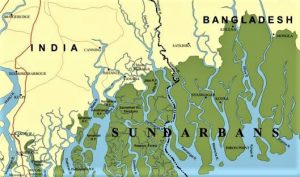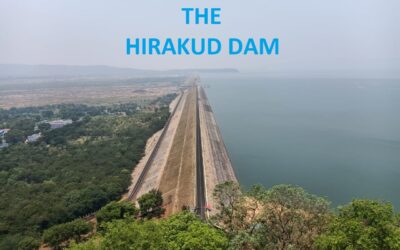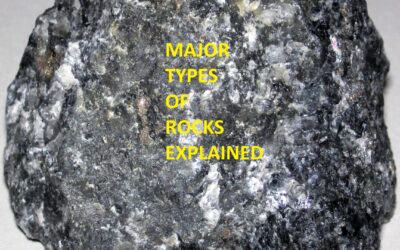DELTA AND ESTUARY – WHERE A RIVER DIES

ESTUARY- FUNNEL SHAPED

DELTA – FAN SHAPED
A Delta or an Estuary is the last destination of a river. A river moves slowly as it nears its mouth, or end. Here, the river becomes calm and quite. This causes silts and sediments carried downstream by currents, to fall to the river bottom. The slow speed of the river and the build-up of sediment allows the river to break from its single channel as it nears its mouth. The river forms a Delta. On the other hand, An estuary is a partially enclosed, coastal water body where freshwater from rivers and streams mixes with salt water from the ocean. Estuaries, and their surrounding lands, are places of transition from land to sea.
If you are targeting NTSE then for selected questions, click here.
One day everyone has to become old. As rivers grow older, they go through different stages of life. Each phase comes with different responsibilities and challenges. A delta is a triangular piece of land, formed by a river before falling into the sea. This is the last stage of a river. After forming the delta, the river slowly proceeds to meet the sea. After that, the river disappears. That is the death of a river. In class IX you will read about Delta and Estuary in chapter Physical Divisions of India.
JOURNEY OF A RIVER: UPPER COURSE
A river originating from a mountain as a small pure stream ends its journey in the sea. Aging can be visible. Being older means being in physical decline. As the river proceeds from the mountains, it makes waterfall. Here, the river is young, immature, destructive and powerful. It cuts the rocks and enjoys all types of destructive work.
MIDDLE COURSE
When it reaches the plains, the speed of the river decreases. With many twists and turns, the river reaches the mature stage. Stops destruction and starts depositing. We deposit our savings in the bank, so does the river.
LOWER COURSE – DELTA FORMATION

When the river reaches near the sea, the river becomes old. Now it does not have the strength to carry the sediments. Therefore, it keeps on depositing the sediments. The sediments deposited by the river blocks its path. The river with no strength left tries to move, but finds itself to be helpless. Therefore, the river gets distributed into numerous small streams. These are called Dis tributaries. One such stream of river Ganga is called Hoogly. The famous Howrah bridge is over Hoogly river. (Learn to make Howrah bridge with paper at home). Click here. https://www.youtube.com/watch?v=GYwqx9o_ino&t=54s Kolkata is also located on the banks of Hoogly. It resembles like the branches of a tree. The deposited soil is very fine and fertile. The river has to struggle to find a way through the deposited soil. Ultimately, it reaches the sea. Here, the river ends its journey. The story of every river is more or less the same.
All the Himalayan and peninsular rivers of India which flows towards Bay of Bengal form delta.
ESTUARY:
http://https://www.youtube.com/watch?v=AUKYoVG0ROE
Just as some rivers form delta before meeting the sea, few rivers form estuary. In India, River Narmada and Tapi which flow towards the west form estuary before meeting the sea. These rivers are seasonal (Rain fed). As the slope is towards the west, they flow in that direction at a great speed to meet the Arabian sea.
HOW ESTUARIES ARE FORMED:
Rivers like Narmada and Tapi flows through rift valleys.
They flow through the areas of hard rocks.
Therefore, these rivers contain very little silts.
Due to the slope towards the west, the flow of river is fast.
With great speed, these rivers fall into the Arabian sea.
Due to the force, it cuts the land deep.
Because of the speed these rivers are unable to deposit its silts.
Silts fall straight away into the Arabian sea.
Before meeting the sea, these rivers become wide.
If you take a bird’s eye view, it resembles like a funnel.
Therefore, an estuary is an inlet formed generally by the submergence of the mouth of a river.
It has a single mouth or channel.
It has steep banks or slopes.
Both, strong tidal waves and the force of the river, makes the mouth wide.
DIFFERENCE BETWEEN A DELTA AND AN ESTUARY
- Very slow speed of river forms delta. Fast flowing river forms an estuary.
- In delta there is huge accumulation of soil but In an estuary, there is no deposition of soil.
- The river divides itself into numerous channels (BRANCHES) in a delta where as in an estuary there is a single river.
- A delta is a highly fertile region but estuaries are comparatively less fertile.
- Delta occupies a very large area where as Estuaries are narrow inlets and occupies smaller areas.
SIMILARITIES BETWEEN A DELTA AND AN ESTUARY
- Both Delta and estuary are made by the rivers at their mouth of sea.
- At the mouth of both the rivers, fresh water meets with the saline water of sea.
- Mangrove forests are found in delta as well as estuary region.




0 Comments